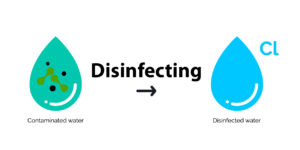During the last few weeks of November and the early part of December, residents may notice a stronger chlorine odor and taste in their tap water. With the lower levels of water in West Lake, quality challenges have become more apparent and require a change in the disinfection process. To help mitigate bacteria and other issues at the lower levels, a free-chlorine disinfection process will begin. This change poses no risk, but the water works team recommends testing any water being added to aquariums to avoid harming fish or other animals.
“We understand taste and quality are big factors for our water customers,” said Water Superintendent Brandon Patterson. “With the conservation measures in place, we need to do all we can to make every available ounce of water we have as safe and healthy as possible.”
Switching from chloramines to free-chlorine is a common practice in water treatment and OWW goes through the process in the spring or fall when necessary. Free-chlorine is a stronger disinfectant than chloramines, but it cannot be used year-round due to byproducts it creates that are regulated by the Environmental Protection Agency (EPA). The use of ammonia with chlorine – chloramines – reduces or eliminates these byproducts and helps your Osceola Water Works department continue to provide clean and safe drinking water.
“Normally, this free-chlorine treatment is used in conjunction with fire hydrant flushing,” said Brandon Patterson, Osceola Water Superintendent. “But because of our need to conserve water, we’re going to make the filtration change inline, without a purge.”
Residents who are sensitive to chlorine can also simply keep an open container of tap water in the refrigerator to allow the chlorine to dissipate naturally, reducing the chlorine taste and smell in the water.
